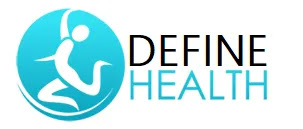what is the treatment for heat exhaustion - Exploring Effective Treatments for Heat Exhaustion
Exploring Effective Treatments for Heat Exhaustion
Heat exhaustion is a common concern, especially during scorching summer months or intense physical activities. Understanding the proper treatment is crucial for prompt recovery and preventing more severe conditions like heatstroke. In this comprehensive guide, we'll delve into effective treatments for heat exhaustion, ensuring you're well-equipped to handle this potentially dangerous situation.
 |
| what is the treatment for heat exhaustion |
Recognizing the Signs of Heat Exhaustion
Before we explore treatments, it's essential to recognize the signs of heat exhaustion. Common symptoms include heavy sweating, weakness, dizziness, nausea, and an elevated heart rate. If left untreated, heat exhaustion can progress to heatstroke, a life-threatening condition. Immediate action is paramount when symptoms arise.
Hydration: The First Line of Defense
One of the primary contributors to heat exhaustion is dehydration. Rehydration is a cornerstone of treatment. Consuming cool water in small sips at regular intervals helps replenish lost fluids. Sports drinks containing electrolytes can also be beneficial, aiding in the restoration of essential minerals.
Cooling Strategies to Beat the Heat
Effective cooling strategies play a pivotal role in treating heat exhaustion. Employing these methods helps lower the body's core temperature and alleviates symptoms.
1. Find Shade or Create Shelter
Escaping direct sunlight is crucial. Seek shade or create a temporary shelter using available resources. This simple step prevents further exposure to the intense heat, facilitating the body's cooling process.
2. Cool Compresses
Apply cool compresses to key areas like the neck, forehead, and wrists. This aids in dissipating heat from the body, providing relief. Wet towels or ice packs wrapped in a cloth can be applied for a sustained cooling effect.
3. Clothing Adjustments
Loose, lightweight clothing promotes better air circulation and aids in the cooling process. Dark colors absorb heat, so opting for lighter shades reflects sunlight, reducing overall body temperature.
Rest and Recovery
Ensuring sufficient rest is another critical aspect of heat exhaustion treatment. Rest allows the body to recover, reducing the strain on the cardiovascular system.
1. Lie Down and Elevate Legs
Lie down in a cool, shaded area and elevate the legs slightly. This position aids blood circulation, facilitating the recovery process. Avoid strenuous activities until fully recovered.
2. Take Cool Showers
A cool shower or bath helps lower the body temperature. This method is particularly effective when combined with other cooling strategies. Ensure the water is not too cold to prevent shock.
When to Seek Medical Attention
While the aforementioned treatments are generally effective, it's crucial to recognize when medical attention is necessary.
1. Persistent Symptoms
If symptoms persist despite initial treatment efforts, seeking professional medical advice is imperative.This holds particularly true for people who already have existing health conditions.
2. Worsening Condition
If the individual's condition worsens or if confusion, seizures, or loss of consciousness occurs, immediate medical attention is vital. These signs may indicate the progression to heatstroke, a medical emergency.
Preventive Measures for Future Protection
Prevention is the key to avoiding recurrent episodes of heat exhaustion. Incorporating these measures into your daily routine can greatly diminish the associated risk.
1. Stay Hydrated
Maintain adequate fluid intake, especially during hot weather or strenuous physical activities. Hydration is essential in preventing dehydration, a primary trigger for heat exhaustion.
2. Gradual Acclimatization
Gradually acclimate your body to hot environments, particularly if engaging in activities like exercising or working outdoors. This helps your body adjust to higher temperatures, reducing the risk of heat-related illnesses.
3. Dress Appropriately
Choose lightweight, breathable clothing that allows proper ventilation. Sunscreen and a wide-brimmed hat provide additional protection against harmful UV rays.
Conclusion In conclusion, prompt and effective treatment is crucial when dealing with heat exhaustion. Recognizing symptoms, employing cooling strategies, ensuring proper rest, and seeking medical attention when necessary are integral aspects of managing this condition. By incorporating preventive measures into your lifestyle, you can significantly reduce the risk of experiencing heat-related illnesses. Stay informed, stay cool, and prioritize your well-being, especially during the heat's most challenging moments.


